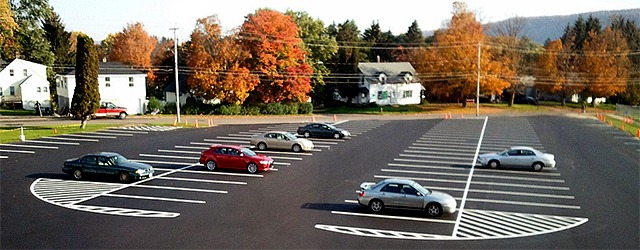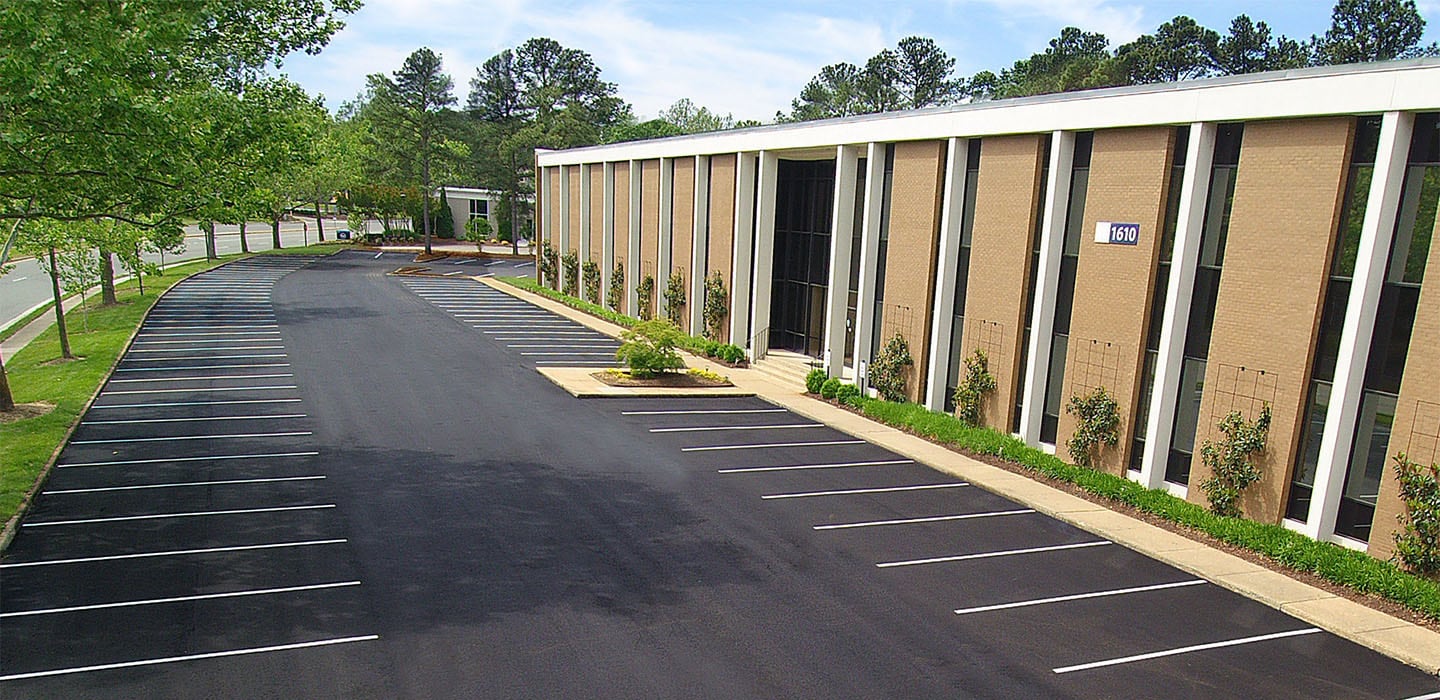
As the seasons change and temperatures begin to dip, completing your paving projects before the cold sets in becomes critical. For contractors and businesses planning asphalt paving or repairs, timing is everything. Experts recommend finishing paving projects before temperatures consistently fall below 50°F.
In this article, our paving experts at Ruston Paving explain why this temperature threshold matters, the risks of cold-weather paving, and actionable tips to ensure a durable, high-quality pavement.
Table of Contents
Why Temperature Matters for Asphalt Paving
Asphalt is a temperature-sensitive material that requires specific conditions for proper installation and curing. When temperatures drop below 50°F, several challenges arise that can compromise the quality and longevity of your pavement.
The Consequences of Paving in Cold Weather
Ignoring the 50°F threshold can lead to costly consequences. Here are some common issues that arise when paving in cold weather:

- Cracks and Fractures: Improperly compacted asphalt is prone to cracking, especially during freeze-thaw cycles in winter.
- Potholes: Weak spots in the pavement can quickly turn into potholes when exposed to traffic and harsh weather.
- Water Infiltration: Poorly bonded asphalt allows water to seep into the subbase, leading to erosion and further damage.
- Increased Maintenance Costs: Pavements installed in suboptimal conditions often require frequent repairs, driving up long-term costs.
Benefits of Completing Paving Projects Before Cold Weather
Finishing your paving project before temperatures drop below 50°F offers several advantages:
- Stronger, Longer-Lasting Pavement: Warm weather ensures proper compaction and curing, resulting in a durable surface that withstands heavy use and weather changes.
- Cost Savings: A well-installed pavement requires less maintenance and fewer repairs, saving you money in the long run.
- Improved Aesthetics: Warm-weather paving results in smoother, more even surfaces, enhancing the curb appeal of your property.
- Faster Project Completion: Optimal temperatures allow crews to work efficiently, reducing project timelines and minimizing disruptions.

Tips for Planning Your Paving Project
To ensure your paving project is completed before cold weather sets in, follow these practical tips:
Regional Considerations
The 50°F rule applies broadly, but specific temperature requirements may vary depending on your location and climate. For example:

- In northern states like New York and Virginia, where winters are harsh, aim to complete paving by early fall to avoid early cold snaps.
- In milder climates like Virginia or North Carolina, you may have a longer paving season, but it’s still wise to avoid late fall or winter projects when temperatures can dip unexpectedly.
Consult with the experts at Ruston Paving to determine the best timing for your region.
Conclusion
Finishing your paving projects before temperatures drop below 50°F is essential for ensuring a durable, long-lasting pavement. Cold weather compromises asphalt compaction, adhesion, and curing, leading to costly repairs and premature deterioration. By planning ahead, working with experienced contractors, and timing your project for warm weather, you can achieve a high-quality pavement that enhances your property’s value and functionality.
Don’t wait until winter creeps in, schedule your paving project today and enjoy a smooth, reliable surface for years to come!
Ready to start your paving project? Contact Ruston Paving to get a quote and schedule your project before the cold weather hits. Act now to ensure your pavement is built to last!

